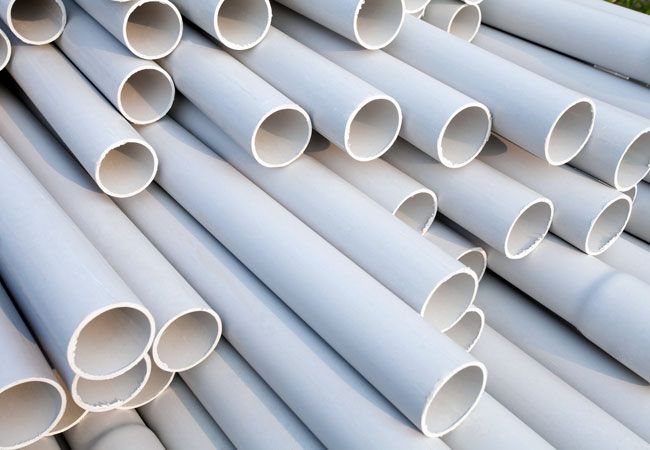Polymeric Materials in the Construction Industry
Today, polymeric materials are recognized as essential and fundamental components of the construction industry. These materials, which include a wide range of natural and synthetic polymers, have secured a prominent position in various building projects due to their unique characteristics, such as lightweight, corrosion resistance, thermal and acoustic insulation, high moldability, and cost-effectiveness. In this article, we will explore the applications of polymers in construction and examine their advantages, disadvantages, and the reasons behind their growing usage.
Application of Polymers in Construction
Polymeric materials used in the construction industry can be categorized as follows:
| Type of Polymer | Examples | Primary Applications |
|---|---|---|
| Thermoplastics | PVC, PE, PP | Pipes, cables, windows, floor coverings |
| Thermosets | Epoxy resins, polyurethane | Adhesives, flooring, composites |
| Elastomers | Silicone, EPDM | Sealants, gaskets, seismic insulation |
| Polymeric Composites | FRP, GFRP | Structural reinforcement, bridges, tunnels |
Key Applications of Polymers in Building Construction
A. Piping and Fluid Transfer Systems
One of the earliest and most important applications of polymeric materials in construction is water supply, sewage, and ventilation systems. Polymers such as polyvinyl chloride (PVC), polyethylene (PE), and polypropylene (PP) are widely used in this field due to their high resistance to rust, corrosion, pressure, and chemical substances. These polymers have become suitable replacements for traditional metal pipes.
Advantages: Lightweight, easy installation, long service life, cost-effectiveness
Disadvantages: Sensitivity to high temperatures, reduced resistance to UV radiation without additives
B. UPVC Doors and Windows
Doors and windows made from UPVC profiles (a type of rigid PVC) are widely used in residential and commercial buildings due to their excellent thermal and acoustic insulation, resistance to weather conditions, and no need for painting.
Advantages: Reduced energy loss, long service life, moisture resistance
Applications: Homes, office buildings, hospitals, and noise-sensitive facilities
C. Thermal and Acoustic Insulation
Polymers such as polyurethane (PU) and polystyrene (EPS, XPS), in the form of foam or rigid insulation boards, are used in walls, ceilings, and floors. These materials play a vital role in optimizing energy consumption and enhancing the comfort of occupants.
Advantages: Energy savings, lightweight, quick installation
Limitation: Requires fire protection in certain applications
D. Polymeric Flooring
Vinyl, epoxy, and polyurethane-based floorings are widely used in residential, industrial, and commercial projects. In addition to their aesthetic appeal, these floorings offer excellent resistance to wear, chemicals, and moisture.
Applications: Sports halls, healthcare centers, factories, warehouses
E. Adhesives and Sealants
Epoxy, polyurethane, silicone, and acrylic resins are commonly used as construction adhesives and sealants for windows, tile work, metal structures, and insulation installation.
Features: Strong adhesion, durability against environmental factors, flexibility
C. Structural Reinforcement with Polymeric Composites
In modern structural strengthening projects, polymer-based composites such as Carbon Fiber Reinforced Polymer (CFRP) and Glass Fiber Reinforced Polymer (GFRP) are widely used to reinforce concrete structures, bridges, and tunnels. These materials, with their high strength-to-weight ratio, offer an effective alternative to traditional steel reinforcement in certain applications.
Advantages: High strength, lightweight, easy installation
Challenges: High cost and need for precise engineering
3. General Advantages of Using Polymers in Construction
Reduced Structural Weight: Lighter building elements reduce the need for heavy structural frameworks and lower foundation costs.
Faster Construction: Polymer components are easy and quick to install, accelerating the overall building process.
High Durability: Resistant to moisture, corrosion, chemicals, and microbial attack, leading to longer service life.
Design Flexibility: Polymers allow for diverse shaping and coloring options, enabling creative architectural designs.
Energy Efficiency: Polymers contribute significantly to thermal and acoustic insulation, enhancing energy conservation.
4. Limitations and Challenges
Despite their many benefits, the use of polymers in construction presents certain challenges:
Low Fire Resistance: Some polymers have limited resistance to heat or flame and must be treated with fire-retardant additives.
Environmental Sustainability: Recycling and managing polymer waste is a key environmental concern that must be addressed in design and construction.
UV Degradation: Long-term exposure to sunlight may lead to discoloration or loss of mechanical strength in some polymers.
Conclusion
Polymeric materials, with their outstanding technical properties and diverse applications, have become one of the most transformative elements in the construction industry in recent decades. From hidden infrastructure components to exterior architectural elements, polymers play a vital role in all phases of building. With continued advancements in material science, these materials are expected to become even more efficient, cost-effective, and environmentally friendly, further solidifying their place in the future of construction.



